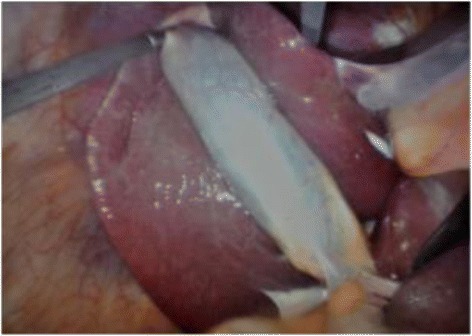Playlist
Show Playlist
Hide Playlist
Post-Cholecystectomy Syndrome
-
Slides Pancreas and Biliary Tract.pdf
-
Download Lecture Overview
00:00 Post-cholecystectomy syndrome. Now the gallbladder has been removed. Persistent right upper quadrant pain with nausea and vomiting after cholecystectomy that mimics preop symptoms. You will find these in a number of your patients and if you have not properly educated your patient, they have no idea what's going on because they don't know what to expect. But if you tell them, follow up and say listen "There's every possibility, I have just performed the surgery, I removed your gallbladder, this is why you needed it but the body will take a little bit of time to adapt so therefore you might still have the same symptoms as what you're experiencing prior." Important that you know the definition. It happens more often than we would like. 00:51 Some of the possible etiologies for this syndrome include papillary stenosis, a retained stone that wasn't removed during the surgery, an injury to the common bile duct or biliary dyskinesia, which is a motility disorder of the biliary tree often caused by hypertonic sphincter of oddi preventing the empty of the bile duct contents into the duodenum. 01:11 The workup of this syndrome usually starts with an ultrasound or a CT to identify retained stone. 01:16 An ERCP can also be helpful in these situations. It'll be diagnostic for bile duct injurie and the sphincterotomy will be therapeutic for both the retained stone or a hypteronic sphincter of oddi.
About the Lecture
The lecture Post-Cholecystectomy Syndrome by Carlo Raj, MD is from the course Pancreatic and Biliary Tract Diseases: Basic Principles with Carlo Raj.
Included Quiz Questions
Which of the following is NOT a complication associated with surgical removal of the gallbladder?
- Choledochal cysts
- Papillary stenosis
- Retained stone in the common bile duct
- Bile duct injury
- Biliary dyskinesia
A patient presents with the post-cholecystectomy syndrome. Endoscopic retrograde cholangiopancreatography (ERCP) was performed, and obstruction was ruled out. What is the probable cause of this condition?
- Biliary dyskinesia
- Post-cholecystectomy scarring
- Retained part of the gallbladder
- Bile duct obstruction
- Papillary dilation
Customer reviews
5,0 of 5 stars
| 5 Stars |
|
5 |
| 4 Stars |
|
0 |
| 3 Stars |
|
0 |
| 2 Stars |
|
0 |
| 1 Star |
|
0 |




